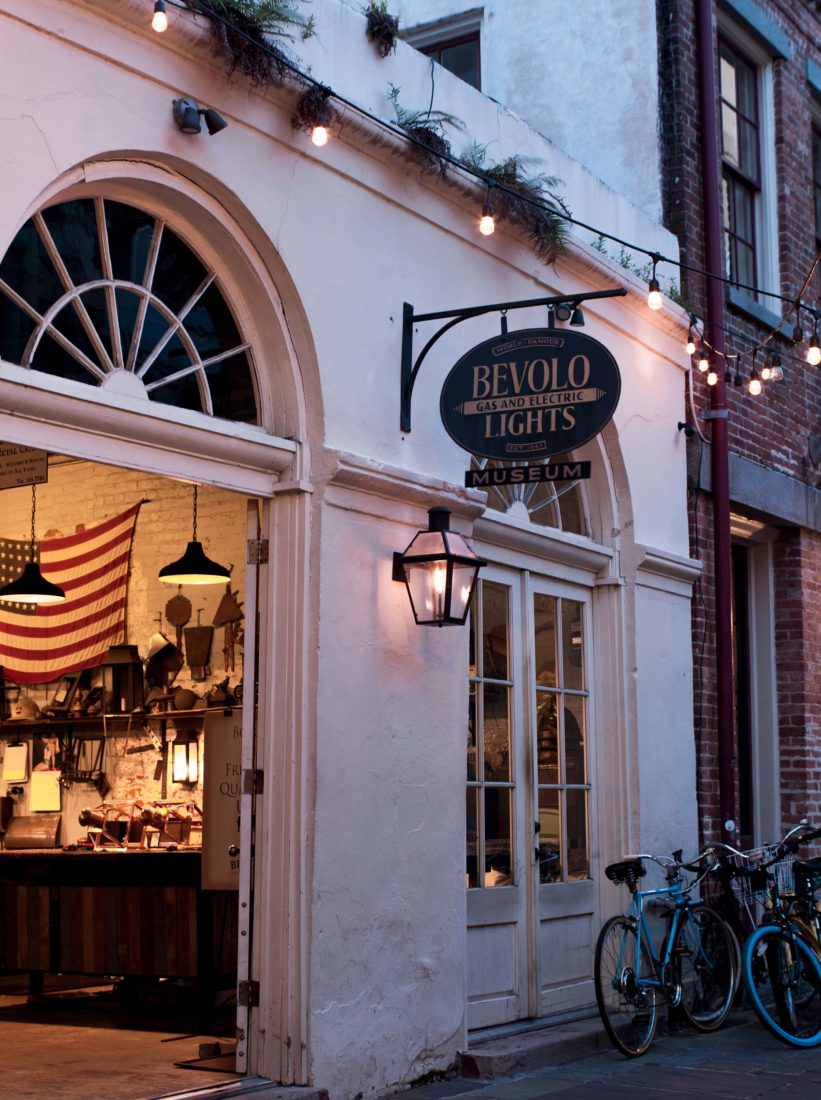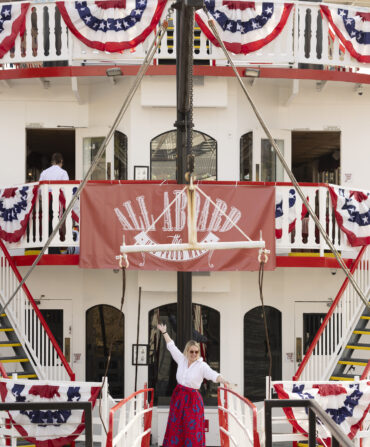Drew Bevolo, the third-generation owner of Bevolo Gas & Electric Lights in New Orleans, chuckles when he remembers all of the phone calls. They came from the renowned Louisiana architect A. Hays Town, and picked up in frequency in 1999, when Bevolo officially took over the company known around the world for its distinctive gaslights. “Town would call and say, ‘Son, did I ever tell you how your grandfather and I met?’” Bevolo says. “I’d heard it, of course, hundreds of times. But I always listened again.”
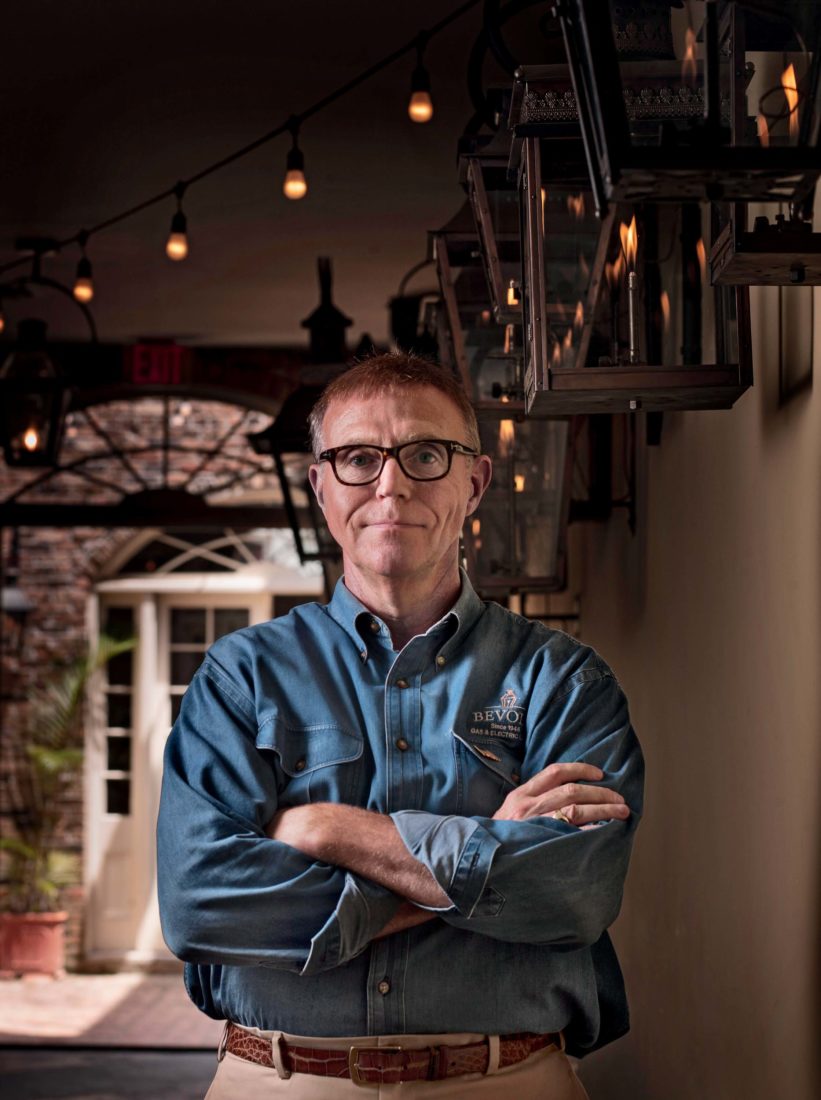
Photo: Morgan & Owens
Drew Bevolo.
It is, after all, a story worth retelling, one that traces
the origin of one of the most iconic features of New Orleans: One evening in the early 1960s, Town, his modernist architecture on the rise, took a stroll through the mesmeric streets of the French Quarter. He was seeking inspiration for light fixtures he wanted on a building he was designing for the school now known as the University of Louisiana at Lafayette. On Royal Street, Town passed a door and heard the distinct tink, tink, tink of ball-peen hammers. He entered the shop and met the owner, a man named Andrew Bevolo Sr.
In the 1930s, Bevolo Sr., an Italian immigrant, had worked at Sikorsky Aircraft in Connecticut, where he was a member of the crew that constructed the world’s first mass-produced helicopter. During World War II, he moved to New Orleans and took a job with Higgins Industries, where he helped make the landing craft for the D-day invasion. Ten days after the war ended, the entrepreneurial Bevolo Sr. started Bevolo Metal Crafts, which handled a range of tasks from repairing chandeliers to making surgical equipment.
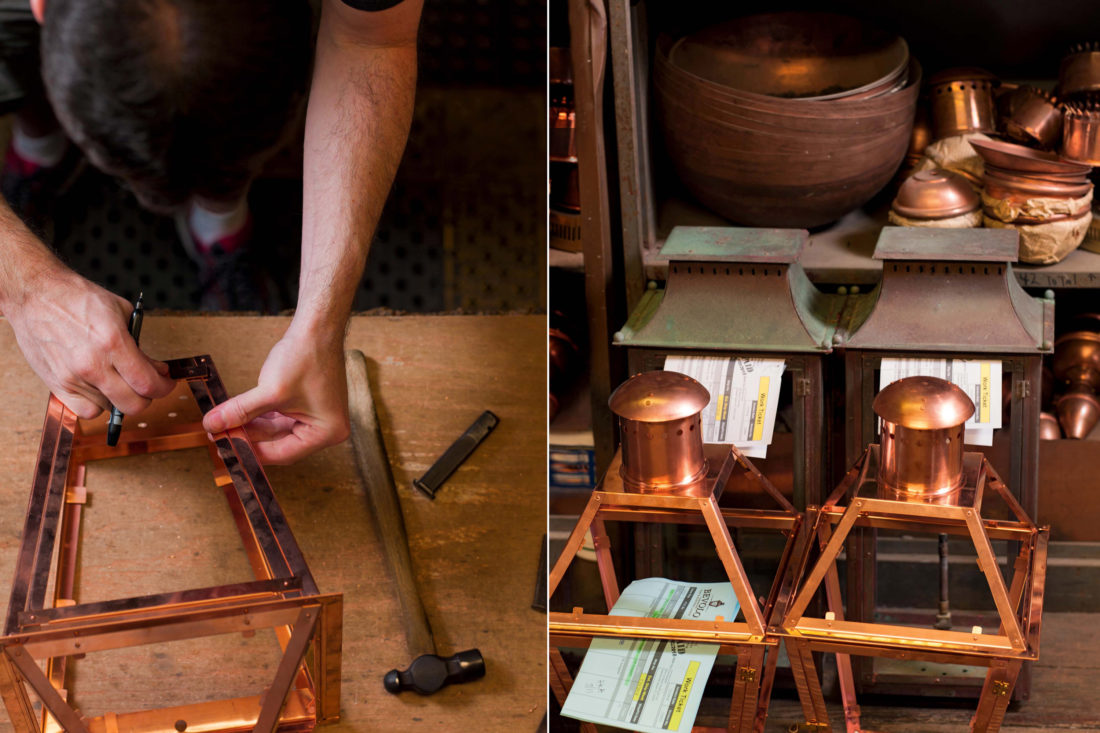
Photo: Morgan & Owens
From left: A coppersmith makes a door for a lantern; refurbished Williamsburg lanterns.
Most notably, though, Bevolo Sr. worked on gaslights. After the war, customers began to bring him streetlights in need of repair. Those lights, some more than a century old, were difficult—and in some cases, impossible—to fix because the copper frames had been soldered together, which weakened the metal. As a solution, Bevolo Sr. put his aviation background to use and began using rivets to keep the pieces of copper together, which made for a stronger, longer-lasting hold. “This was his historic contribution to gas lighting,” Bevolo says.
Which brings us back to Town. That evening in the French Quarter, he asked Bevolo Sr. if he could make him a light fixture. If you can draw it, the shop owner said, I can make it. And an icon was born: the French Quarter Lantern, a copper, brass, and glass light now found in tens of thousands of residences and commercial buildings—including Brennan’s, Commander’s Palace, and the Cabildo—in the city of New Orleans alone.
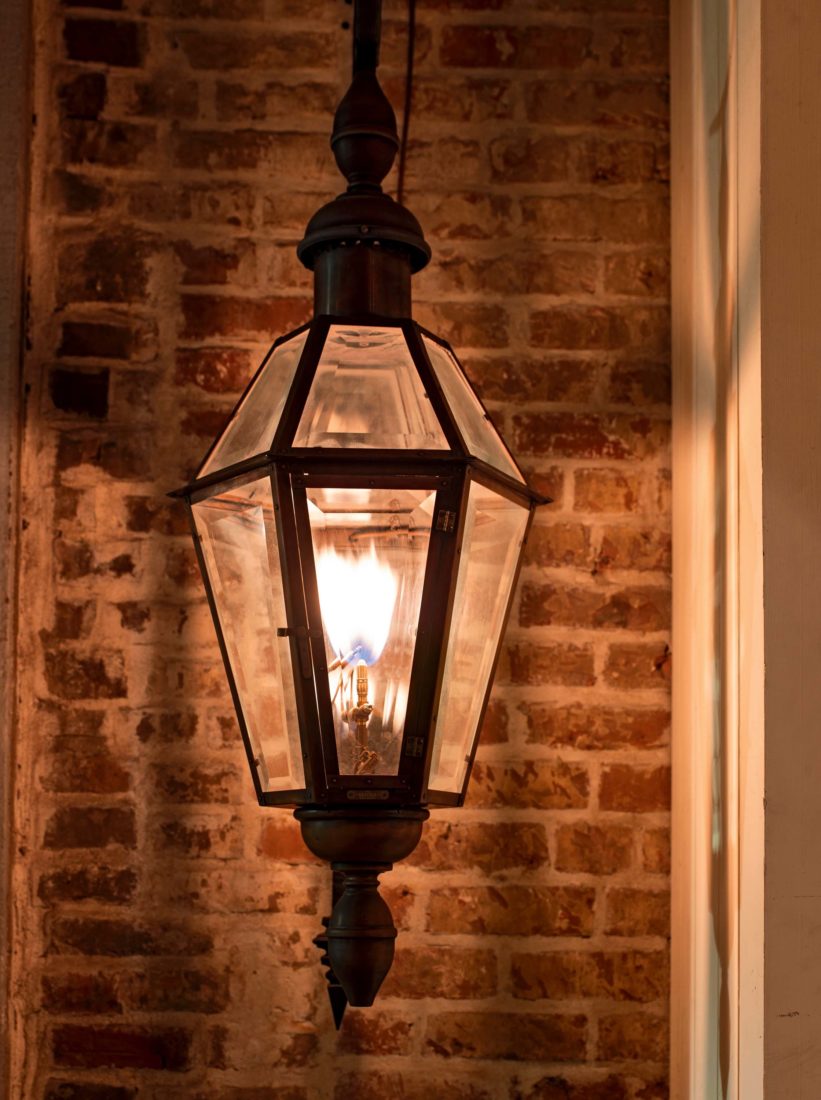
Photo: Morgan & OWens
A Canal Street lantern.
That legacy, Bevolo says, is what drew him back to the family business after years working as a stockbroker. His uncle, Jimmy Bevolo, who ran the company after Bevolo Sr. died, called him one day and told him he was thinking about retiring and selling the business. “I decided that I didn’t want that to happen, so I ditched the suit,” Bevolo says. “All of those stories from my grandfather and those calls from Town started to have more resonance then.”
After Uncle Jimmy taught him to make the lights, Bevolo took over, and set out to revamp the business. He changed the name to Bevolo Gas & Electric Lights. He trained new artisans, streamlined the work flow, and opened new warehouses, manufacturing facilities, and a museum featuring two working coppersmiths (and his grandfather’s original worktable) in the Royal Street showroom. He expanded the number of light styles to more than five hundred.
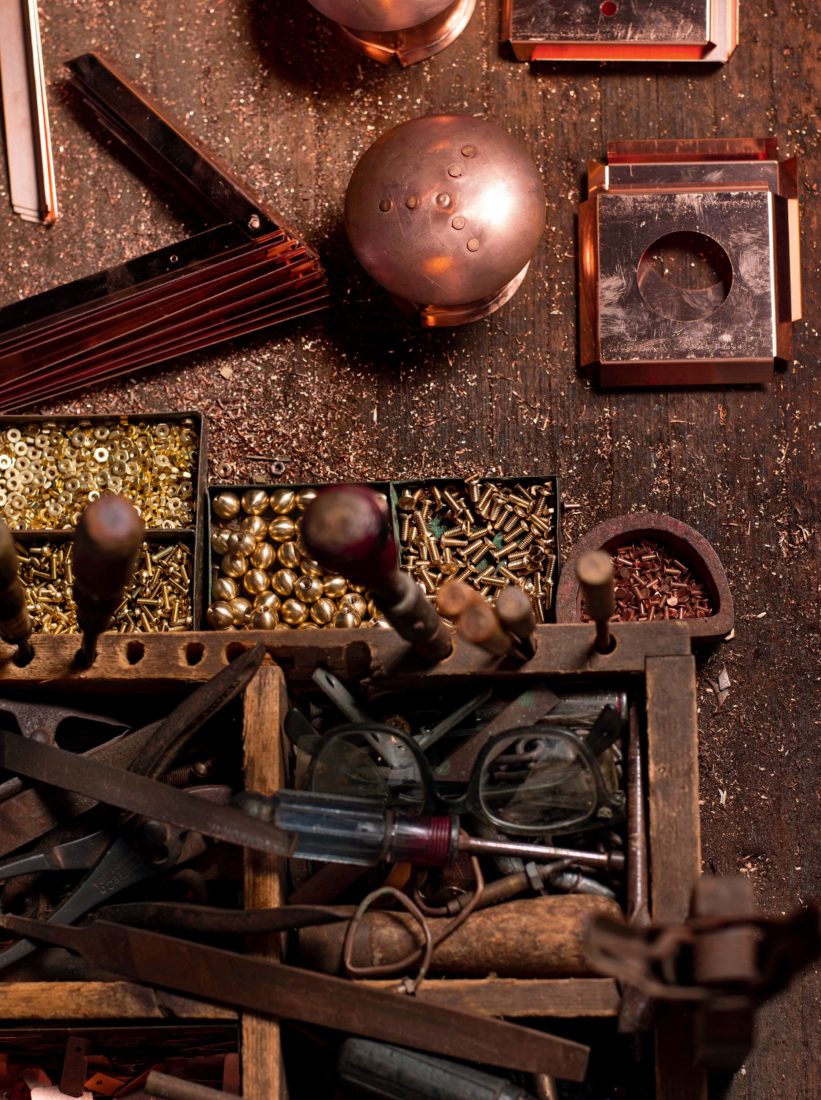
Photo: Morgan & Owens
Rivets, nuts, and bolts.
While Bevolo lights are now found in all fifty states and in forty-seven countries, the original French Quarter Lantern remains the most popular design. It helps that the next generation of Southern architects, such as Andrés Duany, Ken Tate, and Bobby McAlpine—all influenced by Town, who died in 2005 at the age of 101—employ Bevolo lights in many of their projects. And yet, Bevolo steadfastly holds to tradition. All Bevolo lights—which range in price from $200 for simple lamps to $5,000 for larger installations—are still hand made and sourced in the United States. Sheets of copper are cut with hand and foot shears. The brackets are hand welded. The nearly one hundred rivets per light are tapped in with ball-peen hammers. The lights are not sold online. “People call us and send us their house plans, and we make recommendations based on them,” Bevolo says.
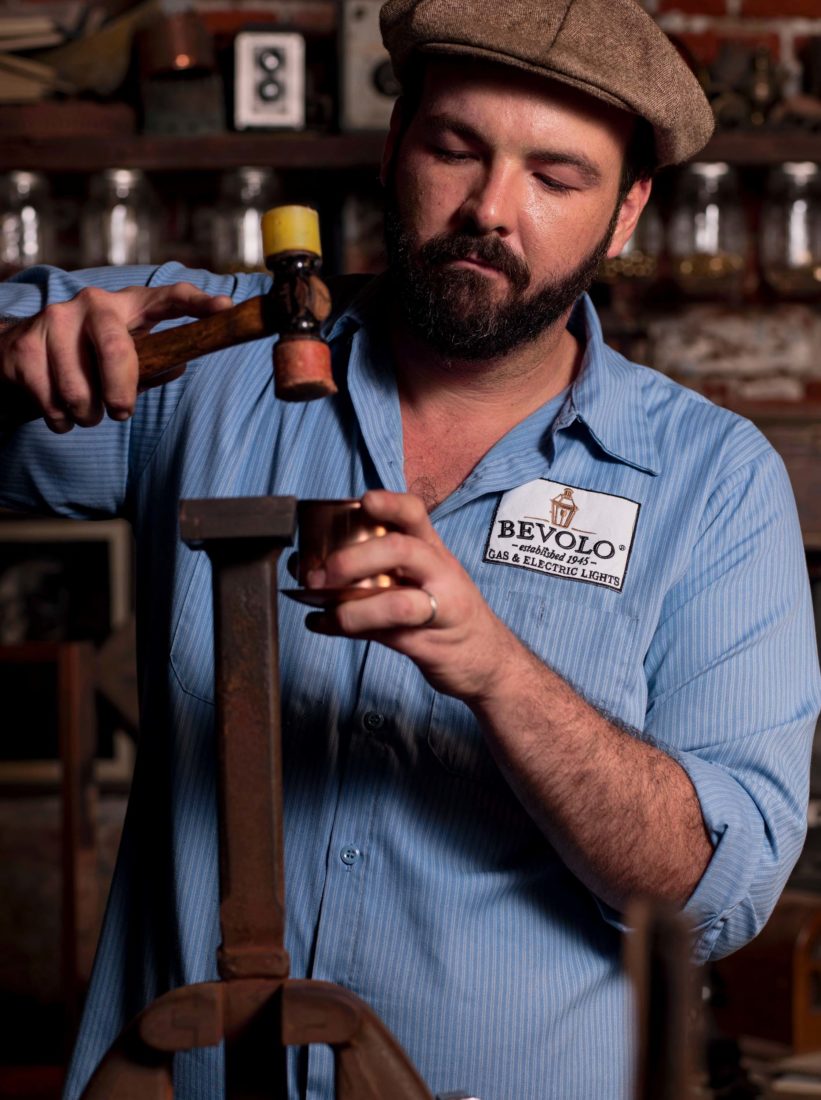
Photo: Morgan & Owens
Bevolo’s Nate Lefever assembles a gas stack.
After an oxidation process, the lights take on a caramel color, the copper frame already aged the equivalent of fifteen to twenty years (the metal should last three centuries). “That way, they fit right in and age along with your house,” Bevolo says. The patented natural-gas “batwing” flame burner is efficient, costing just a few bucks a month. And the company continues to take care of the fixtures even if the original owner sells the house.
Bevolo, who is now sixty-three, is focused on the longevity of his business, as well. His son Chris already runs many of the day-to-day operations. “We like to call them lifetime fixtures,” Bevolo says of his lights—and the same could be said of his company.


